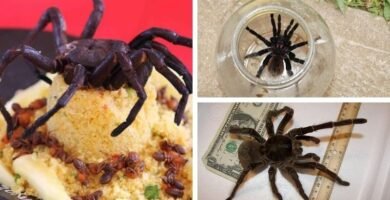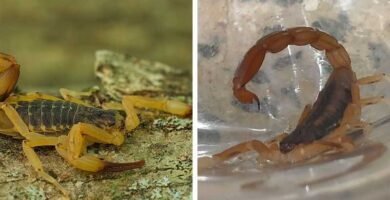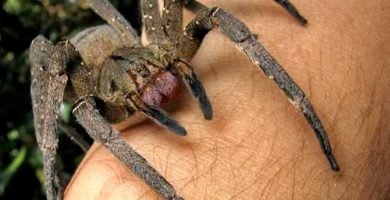
The name blue morpho butterfly is a generic term used to designate more than 65 species of the genus Morpho that inhabit the American Neotropics.
There are many species of blue butterflies in the world. Although probably none surpasses the beauty and size of the Morpho menelaus butterfly, belonging to the genus Morpho of the family Nymphalidae.
Morpho menelaus butterfly
They stand out for exhibiting iridescent metallic blue flashes on their wings, combined with the black border of their wings.
It is known, however, that these striking shades are due to the presence of microscopic, light-reflecting scales located on the back of the wings.
The Morpho menelaus butterfly, the most representative and well known of the species of the genus, is a large butterfly in relation to other butterfly species and genera, with a wingspan ranging from 15 to 20 cm long.
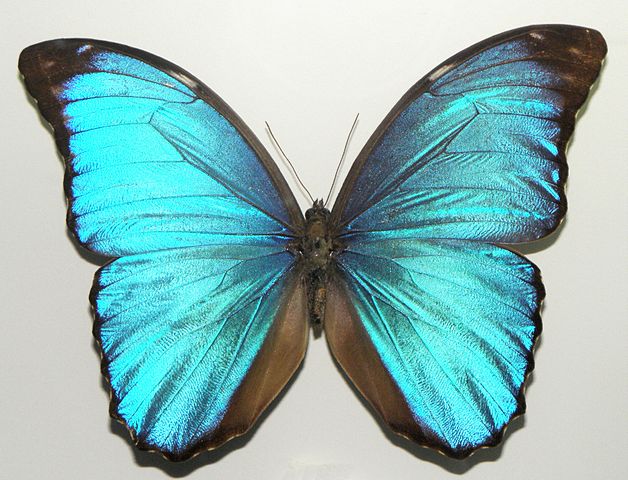
Author: Chucao CCBySA
When it closes its wings, to camouflage itself in the surrounding vegetation, what is seen is an ordinary butterfly, with dull brown wings, with small drawings simulating eyes.
The species shows a certain sexual dimorphism: the wings of the males are wider than those of the females, and their color is brighter.
The more intense coloring of the wings of the males is due to the fact that, being territorial insects, they use this characteristic to warn rival males.
What does the blue morpho butterfly eat?
The Morpho menelaus butterfly is diurnal and solitary.
It feeds on fruit sugars, using the elongated proboscis-like mouthparts to release the juices.
It has odor receptors on its antennae and taste sensors on its legs. The species lives a little more than six months, and its cycle from egg to adult lasts between 187 to 218 days, passing through the various instars from egg (16 to 20 days), prepupa (3 days), larva (145 to 160 days) and pupa (23 to 35 days).
Morpho melenaus has the longest cycle among the species of the genus. The other species of the genus live from 110 to 170 days.
Reproduction of the blue morpho butterfly
Morpho melenaus reproduces by releasing chemicals or sex hormones called pheromones in their wings to attract females.
The female’s eggs are fertilized and placed in a safe place. After nine days the eggs hatch and begin the process of transformation or metamorphosis from egg to adult.
The flight of the Morpho melenaus is slow and elegant, flapping its wings in open areas, on roads or trails in the forest, flying at a height between 30 cm from the ground up to 4 m (12 inches).
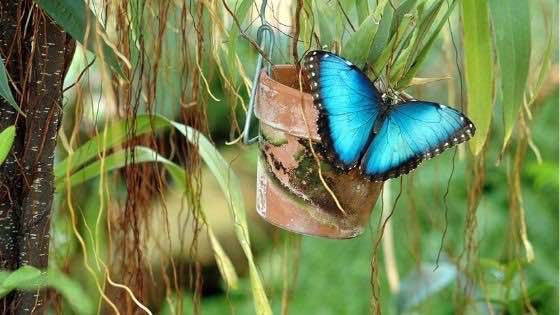
It is a spectacle to see, with the striking iridescent flashes it emits due to the physical effect of the refraction of light on the scales on its wings.
Blue butterfly meaning (symbolism)
Blue butterflies symbolize, in different cultures, joy, beauty, life, rebirth, resurrection, and change. Morpho means changed or modified.
Where does the blue morpho butterfly live? (Habitat)
There are many species of blue butterflies of the genus Morpho. De Vries included three genera within the subfamily Morphinae, present in a wide geographic distribution that includes Mexico, Central and South America.
Of these, the greatest concentration of species is found in the countries of the Amazon basin.
They abound in the vast Brazilian ecoregion of the Cerrado, a tropical savanna with an extension of almost 2 million km2, which occupies the states of Goiás, Distrito Federal, Mato Grosso and Mato Grosso do Sul.
Among the morpho butterflies we may find, besides M. menelaus, M. deidamia, M. didius, M. marcus, M. hecuba, M. polyphemus, M. rethenor, M. sulkowksky, M. aurora, M. peleides, M. amathonte .
Elsewhere, such as in North America, we find magnificent species of blue butterflies such as the Mission blue, from California; or the Eastern tailed blue, from the eastern United States, or the Karner, or the Pacific dotted blue, or the Fender, from Oregon.
Is the blue morpho butterfly in danger of extinction?
Morpho blue butterflies have been decimated by increasing deforestation in the Amazon regions and by human predation, from the indigenous people who hunt them to use them in their ceremonial masks, to the people who hunt them to make decorative items and some jewelry.
Blue butterfly tattoo
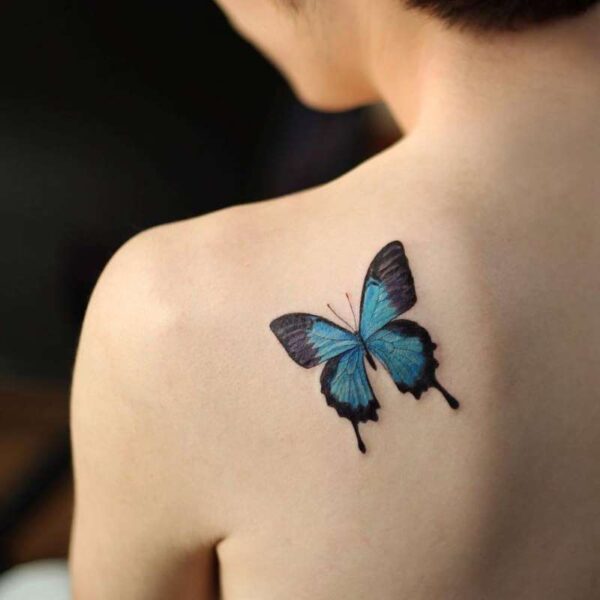
Bibliography
- Blandin P. (2007). The systematics of the Genus Morho. Lepidoptera Nymphalidae. Canterbury; Hillside Books.
- D’Abrera B. (1984). Butterflies of South America. Victoria Hill House.
- De Vries. P.H.J. (1987). The butterflies of Costa Rica and their Natural History. Princeton: Princeton University Press.
- Guerra-Serrudo J.F., Ledezma-Arias J. (2008). Biology and Morphology of Morho menelaus godartii (Lepidoptera : Nymphalidae: Morphinae) in Cotopata National Park (Bolivia). Ecology in Bolivia, Vol. 43 (1), La Paz.
- Montero F., Ortiz M. (2010). Description of the immature stages of Morpho rhodopteron nevadensis (Lepidoptera: Nymphalidae). Tropical Lepidoptera Research, Vol. 20 (2). Rodríguez C.L., Suárez-Ramírez S., Luque J.E. (1996). The genus Morpho in Colombia: II. Taxonomic key to the species present in Colombia. Colombian Agronomy, Vol. 13 (1), 1-22.

Dr. Rafael Cartay is a Venezuelan economist, historian, and writer best known for his extensive work in gastronomy, and has received the National Nutrition Award, Gourmand World Cookbook Award, Best Kitchen Dictionary, and The Great Gold Fork. He began his research on the Amazon in 2014 and lived in Iquitos during 2015, where he wrote The Peruvian Amazon Table (2016), the Dictionary of Food and Cuisine of the Amazon Basin (2020), and the online portal delAmazonas.com, of which he is co-founder and main writer. Books by Rafael Cartay can be found on Amazon.com
Related Posts
October 25, 2020
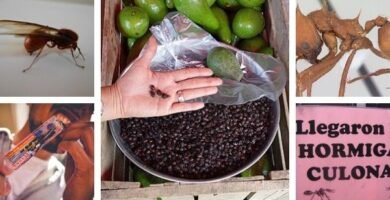
Big-Ass ants (Atta laevigata)
May 18, 2020

Giant Stinger Wasp (Clistopyga crassicaudata)
May 4, 2020
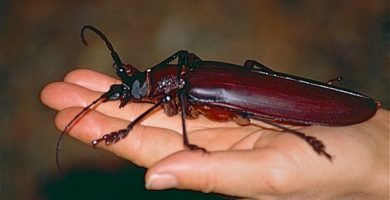
Giant beetle
March 22, 2020
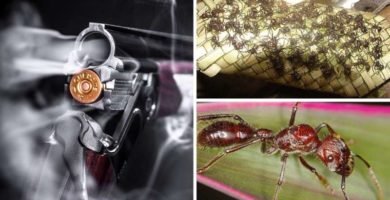
Bullet ant (Paraponera clavata)
February 20, 2020
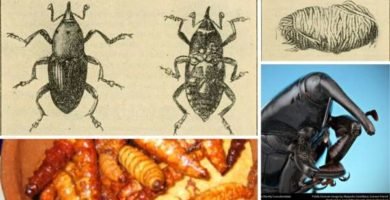
Rhynchophorus palmarum – Pest, Superfood or Medicine?
February 19, 2020

Edible Insects of the Amazon Rainforest
This post is also available in:
![]() Español (Spanish)
Español (Spanish)

